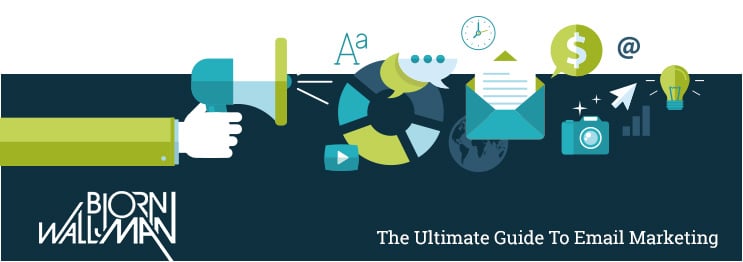Why Generating Website Traffic Takes Time
Looking back at the work you’ve done, it probably seems like it’s been ages since you started working on your website. All of your topics are targeted to your audience, your keyword are optimized and your information is relevant.
So why isn’t your traffic increasing?
This question is asked on a daily basis, and the answer, sadly, isn’t something anyone wants to hear. The truth is that traffic takes time. It’s clear from consistent evidence that unique content creation and traffic-oriented tasks like blogging are not going to cause your site to become flooded overnight. Instead, these tasks are long-term time investments that will eventually develop into valuable traffic resources for you. It does take a serious time commitment and consistency to deliver results as well, so here are some tips that can give you some insight into your traffic generating practices, and how you can improve them.
Being Consistent is a MUST
Although it’s easy to throw together a quick blog post, you have to keep in mind that thousands of blog posts are made every day. In order to break into the world of blogging and have an impact, you have to be consistent. This part takes real commitment. If you can create a schedule or just let your readers know when your next post will be available, it suddenly becomes a must stop-and-see attraction for them. In addition, posting on a regular basis gives your site more credibility in the eyes of the search engine, giving it more value and suggests that you are dedicated to continuing content.
If you’re marketing, this means that it will take a longer time to get the results you’re looking for. Especially if the results you’re looking for fall into the ‘organic’ category. This means that it can take longer than you’d like for your pages to show up in the SERPs, but don’t give up! Being consistent is the best way to earn and keep that new traffic!
High Quality Links ARE Important
Inbound links, otherwise known as back linking, is what you get when another site links directly to a page on your site. When search engine spiders come along to crawl your page, they review the types of inbound links you have. With these reviews, the search engine reveals relevance, credibility and the value of your content. This is especially useful to you if other sites are referring to you as an ‘expert’ in your field.
Of course, the downside to these types of influential links is that they happen slowly over time, as the influence of your site and your content grows. Since these links take time to accumulate, it’s not a huge surprise that the impact on your traffic will be delayed and gradual. However, if you continue to post unique, high quality content on a schedule, you’ll see the number grow because of your continued diligence.
This basic idea is one of the main reasons why inbound link quality is an important focus for you and deserves some time investment. It also means that for SEO, inbound linking becomes a bigger factor. Keep at it!
Reputations are Earned, Not Automated
It can take a long time to become the ‘expert’ in your field, even years, but continuing to provide your service for those around you, even when it seems like no one is listening, is a skill that will keep you motivated and seeking results in the long-run, until you find your own success.
Additionally, your blog and site will need to prove themselves in the same way – over the long term. Working on your content quality and the relevance of your topics is a great way to increase your reputation, since your content with practice is only bound to get better. Once you’ve become the authoritative source of information in your industry, your reputation will be sealed.
Working on your reputation is a long-term project where the rapport is earned, not automatically given to you because your site header reads, “best in the world”. This type of work takes dedication to your schedule and ability to research industry related topics.
Once you’ve employed these techniques into your overall content creation and traffic generation, you should see a marginal increase in your stats, over time. Don’t expect everything to come at you all at once. If you’ve been using these tactics and strategies, here are a few signs to let you know that you’re on the right track.
Increased Number of Ranked Pages
You don’t want your site stats to be stagnant. Search engines like it when you’re making updates and content changes to your site, improving it for the better, making it known that you’re actively participating in the creation and upkeep of your site. The best way to keep your stats growing is by publishing new information on a regular basis. Once you notice an increase in your traffic, look at your stats.
There are multiple ways to keep track of your pages and how they’re indexed. One of our favorite ways is with HubSpot.
If you find the Competitors Report, you’ll see you have the option to keep track of your stats against those who you compete with, giving you a wealth of information including the analysis of your Indexed Pages.
If you only want to see your own pages, just select your own URL from the ones listed at the bottom of the report, then select “Indexed Pages”, located right above the graph. You can even view specific increments of time. For example, if you choose “Last 6 Months”, you can see the progress you’ve made with your efforts recently. Although it may be subtle, an upward and right trend means you’re in good shape! Keep going!
Increased Number of Organic Searches
There are many sources online that allow you to view the analytics of your site, tracking the volume of your organic searches over time. If you have your search set to the last week, or even the last month, you probably won’t see anything that will impress you.
If you really want a true picture of your growth, take a step back and view your analysis from a window of the last 6 months. What you want to see is a slow and steady growth from month to month. You have to keep in mind any season shifts or reasons why someone might not have visited your site, for days that are low. Keep a journal or a document with these dates and provide explanation of the decrease and what you can do to negate it. Are you losing seasonal visits due to non-seasonal blog posts? Was there a huge power outage in your main demographic location?
Google has tightened their grip on keyword phrases, meaning that it can cause you some difficulty driving traffic, but if you can view your trends over time, you can see how you’re going to fare in the long run and make sure you’re headed the right way.
A Full SEO Audit of Every Page
In addition to the site analysis you can access, there are other ways to make sure your site is prepared for long-term success. Luckily, HubSpot can provide them both for you. They are the Page Performance Report and the Blog SEO View.
These pages can give you a quick review of the way your site has been optimized, per page or blog post, and gives you tips on how to make your content even better. This is a great way for you to make sure your posts are doing everything they can to build more traffic for your site. If you continue to work from the ground up and invest your time in unique content, real research and improving your optimization, you will begin to see your trend move upwards.
That’s it! So the next time you begin to feel bad about your results, wonder why you’re not getting the traffic you anticipated or you feel as if your business couldn’t be further from success, come back and re-read this post to get a new outlook on your strategies and the reasons why your traffic takes time to grow. If you’re sure you’re headed in the right direction, keep on going! This is certainly a long-term event, and not a quick sprint to your success, so don’t give up!
All great things take time.



